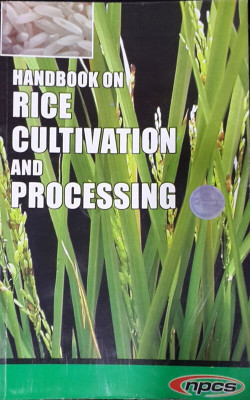Handbook on Rice Cultivation and Processing(English, Paperback, Npcs Board Of Consultants, Engineers)
Quick Overview
Product Price Comparison
Rice is the staple food of over half the world population. Rice is normally grown as an annual plant, although in tropical areas it can survive as a perennial crop and can produce a ratoon crop for up to 30 years. The rice plant can grow to 1 to 1.8 m tall, occasionally more depending on the variety and soil fertility. Since its origin, the spread of rice cultivation is extensive and rice is now being grown wherever water supply is adequate and ambient temperature are suitable. The rice grain is covered with a woody husk or hull, which is indigestible and is to be removed in the first step during processing for making the rice edible. Rice cultivation is well suited to countries and regions with low labor costs and high rainfall, as it is labor intensive to cultivate and requires ample water. Rice can be grown practically anywhere, even on a steep hill or mountain. The traditional method for cultivating rice is flooding the fields while, or after, setting the young seedlings. This simple method requires sound planning and servicing of the water damming and channeling, but reduces the growth of less robust weed and pest plants that have no submerged growth state, and deters vermin. While flooding is not mandatory for the cultivation of rice, all other methods of irrigation require higher effort in weed and pest control during growth periods and a different approach for fertilizing the soil. Drying is an essential step in the processing and preservation of paddy; it is the process that reduces grain moisture content to a safe level for storage. Milling is a crucial step in post production of rice. The basic objective of a rice milling system is to remove the husk and the bran layers, and produce an edible, white rice kernel that is sufficiently milled and free of impurities. India is the second largest rice producing country of the world after China. India also grows some of the finest quality aromatic rice of which basmati is the most high quality rice.This book basically deals with history, origin and antiquity of rice, seed rice and seed production, harvest and post harvest operations, water management practices for rice, diseases and pests of rice and their control, application of biotechnology in aromatic rice improvement, traditional methods of parboiling, modernization of parboiling process, solvent extractive rice milling, general types of quick cooking rice processes, dry milled rice products in brewing, breakfast cereals, rice flakes, puffed rice, rice in multi grain cereals etc.The present book contains cultivation and processing of rice in various ways. The book is very resourceful for the entrepreneurs, technocrats, research scholars etc.


